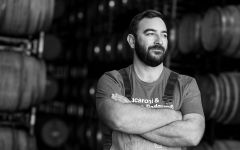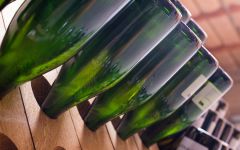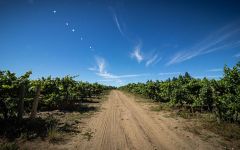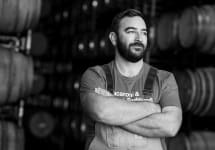Cruse Wine Co. Monkey Jacket 2019
-
Robert
Parker



Product Details
Your Rating
Somm Note
Winemaker Notes
Professional Ratings
-
Robert Parker's Wine Advocate
The 2019 Monkey Jacket offers aromas of dried red and black berries laced with nuances of orange peel, underbrush, mushrooms and bitters. Light-bodied, soft and bright, it has bursts of juicy acidity that highlight its delicate berry fruit, and that upfront freshness will pair beautifully with a wide range of cuisines, especially tomato-based dishes. Best After 2027
Other Vintages
2020-
Robert
Parker
-
Wine &
Spirits







Cruse Wine Co. was an opportunity for Michael to showcase fruit driven and satisfying wines that are pleasurable, but seriously balanced and unapologetically California. The North Coast is near and dear to Michael, so he chose to focus on sites within the Napa Valley and Sonoma County to create his special wines. The one thing he didn’t want to do was to create another Pinot Noir or Cabernet, instead he found inspiration in varieties such as Valdiguie, Tannant, Carignan and St Laurent.
The flagship wine of Cruse Wine Co. is the red blend Monkey Jacket (the name inspired by an old, British sailor song). This wine embodies all the things Cruse Wine Co. is meant to be, as it’s a blend of Valdiguie, Carignan, Tannat, St Laurent and mixed field blend reds and provides incredible drinkability with brightness and ample structure. In addition to Monkey Jacket, Michael also makes small lots of single vineyard varietal wines from Valdiguie, Tannant, Syrah, Carignan and Chardonnay.

With hundreds of red grape varieties to choose from, winemakers have the freedom to create a virtually endless assortment of blended red wines. In many European regions, strict laws are in place determining the set of varieties that may be used, but in the New World, experimentation is permitted and encouraged resulting in a wide variety of red wine styles. Blending can be utilized to enhance balance or create complexity, lending different layers of flavors and aromas. For example, a red wine blend variety that creates a fruity and full-bodied wine would do well combined with one that is naturally high in acidity and tannins. Sometimes small amounts of a particular variety are added to boost color or aromatics. Blending can take place before or after fermentation, with the latter, more popular option giving more control to the winemaker over the final qualities of the wine.
How to Serve Red Wine
A common piece of advice is to serve red wine at “room temperature,” but this suggestion is imprecise. After all, room temperature in January is likely to be quite different than in August, even considering the possible effect of central heating and air conditioning systems. The proper temperature to aim for is 55° F to 60° F for lighter-bodied reds and 60° F to 65° F for fuller-bodied wines.
How Long Does Red Wine Last?
Once opened and re-corked, a bottle stored in a cool, dark environment (like your fridge) will stay fresh and nicely drinkable for a day or two. There are products available that can extend that period by a couple of days. As for unopened bottles, optimal storage means keeping them on their sides in a moderately humid environment at about 57° F. Red wines stored in this manner will stay good – and possibly improve – for anywhere from one year to multiple decades. Assessing how long to hold on to a bottle is a complicated science. If you are planning long-term storage of your reds, seek the advice of a wine professional.

Reaching up California's coastline and into its valleys north of San Francisco, the North Coast AVA includes six counties: Marin, Solano, Napa, Sonoma, Mendocino and Lake. While Napa and Sonoma enjoy most of the glory, the rest produce no shortage of quality wines in an intriguing and diverse range of styles.
Climbing up the state's rugged coastline, the chilly Marin County, just above the City and most of Sonoma County, as well as Mendocino County on the far north end of the North Coast successfully grow cool-climate varieties like Pinot Noir, Chardonnay and in some spots, Riesling. Inland Lake County, on the other hand, is considerably warmer, and Cabernet Sauvignon, Zinfandel and Sauvignon Blanc produce some impressive wines with affordable price tags.
